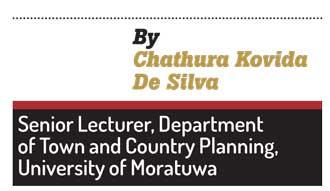Reply To:
Name - Reply Comment
|
Sustainable Coexistence: The lecture organised by WNPS focused on a critical topic: |
 On August 15, the Wildlife and Nature Protection Society (WNPS) of Sri Lanka held its monthly lecture, a key initiative to raise social awareness about wildlife and nature. This month’s session focused on a critical topic: “Co-Existing with Wild Elephants - A Comparison Between Botswana and Sri Lanka.”
On August 15, the Wildlife and Nature Protection Society (WNPS) of Sri Lanka held its monthly lecture, a key initiative to raise social awareness about wildlife and nature. This month’s session focused on a critical topic: “Co-Existing with Wild Elephants - A Comparison Between Botswana and Sri Lanka.”
Inspiring talks from Dr. Pilapitiya and Dr. Adams
The evening’s discussion featured insights from two distinguished speakers: Dr. Sumith Pilapitiya and Dr. Tempe Adams. The timing of the lecture coincided with World Elephant Day, which was celebrated on August 12. The event provided a platform for in-depth exploration of strategies to mitigate human-elephant conflicts (HEC), from lessons from Sri Lanka and Botswana. Sri Lanka is the house of subspecies of the Asian elephant population of 5,700 elephants (this year’s elephant census is presently underway). Meanwhile, Botswana is the house of the African elephant population of approximately 130,000. According to published reports, both elephant and human deaths due to conflict are reported as very high compared to cases from other parts of the world.
Fencing vs. Alternative Approaches
|
National Physical Planning Policy for 2048 (Source: National Physical Planning Policy 2048; Chapter-5)
|
Dr. Pilapitiya emphasised that relying on administrative boundaries for fencing in Sri Lanka has failed to resolve the issue effectively. Instead, he proposed ecological boundary-based fencing and the installation of barriers around community villages as more viable solutions for improving coexistence. He displayed a few examples to demonstrate his argument.
Conversely, Dr. Adams’s presentation took a different coexistence approach adapted in Botswana. Notably, she did not mention fencing in her discussion. Instead, she outlined several successful coexistence strategies from Botswana, emphasising community-led initiatives. Dr. Adams underscored the importance of active community involvement, education, information-driven decision-making, modern technology, and multi-stakeholder collaboration. She advocated for understanding local perceptions and employing community-centred strategies to foster coexistence, arguing that engaging people — the most adaptable element in the conflict – is crucial.
Dr. Adams also presented contemporary research on human perceptions of elephants and discussed the role of education and awareness. She highlighted the use of modern educational materials to educate local citizens and the use of innovative techniques such as camera traps and crowdsourcing to monitor elephant movements with active engagement of citizens. These tools, combined with the widespread use of smartphones, offer promising avenues for disseminating information and enhancing community preparedness.
Inadequacy of current land use planning
Both experts highlighted a significant commonality: the inadequacy of current land use planning in addressing the challenges of human-elephant coexistence. This comes in the backdrop of a National Physical Planning Policy for Sri Lanka for 2048 prepared by National Physical Planning Department (NPPD) to provide broad national-level guidance for all development agencies for the planning and execution of development activities, which will directly impact the physical environment of the country and to establish facilities, amenities and service-related infrastructure incidental upon the development of the physical environment. Understandably, the preparation of a national human settlement planning policy of this nature is a daunting task and yet, Sri Lanka managed to have one with the presence of relevant legal and institutional frameworks, and much-needed expertise and professional inputs.
As per the National Physical Planning Act no. 49 of 2000, the Head of the Government, the President, is the Chairman of the National Physical Planning Council who leads this policy formulation. According to the policy document, representatives from all aligned ministries including the Ministry of Wildlife, Forest, Agriculture, and Irrigation also represented the council.
The policy document acknowledged the issue and included the protection of elephant corridors as a measure to address the issue. This policy direction was found to be guided by the National Environmental Conservation Policy. Yet, it is questionable whether that itself is adequate in addressing this pressing national issue. This is particularly intriguing, especially when taking into account the different approaches used elsewhere globally, as outlined by Dr. Adams.
On a positive note, we are not too late in bringing the revisions and subsequent amendments to the National Physical Planning Policy based on scientific evidence to proactively address this national issue of HEC in the future. As Dr. Adams emphasised, the solutions to address this issue through coexistence need to go beyond the protection of corridors and erection of fences. Community education and active engagement and the appropriate use of technology along with grounded land planning policies are likely to bring us much closer to the reality of sustainable coexistence than before.